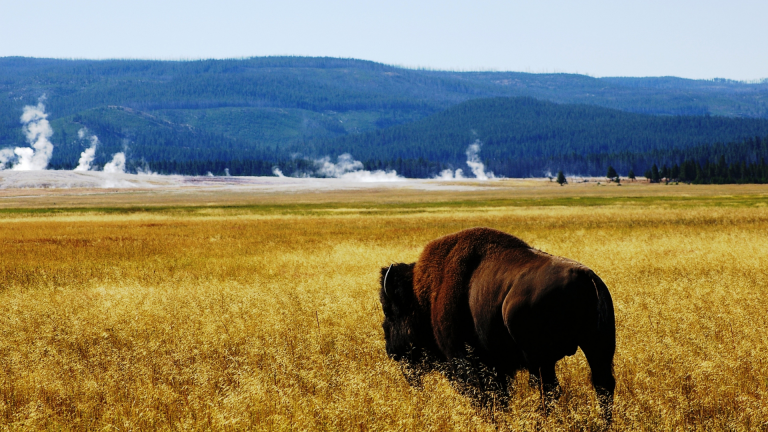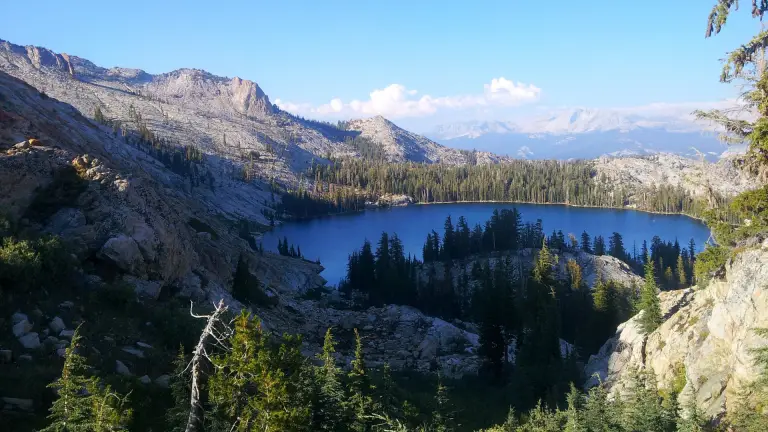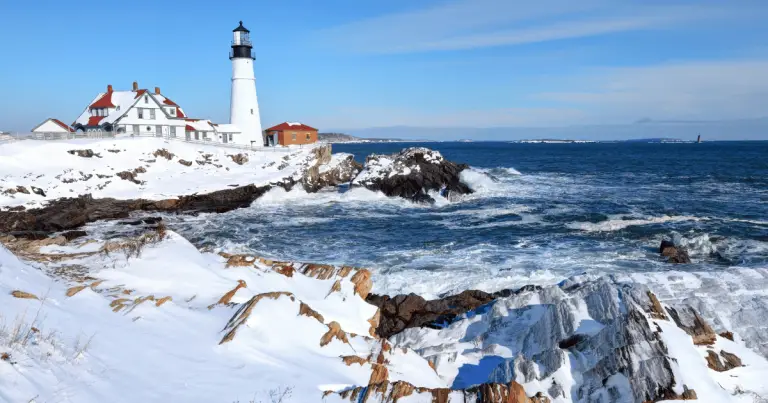A Guide to Exploring Yellowstone in March
Yellowstone National Park is one of America’s most treasured destinations in the northwestern corner of Wyoming. Home to an array of geothermal features, wildlife, and rugged landscapes, it’s a breathtaking attraction no matter what time of year you visit.
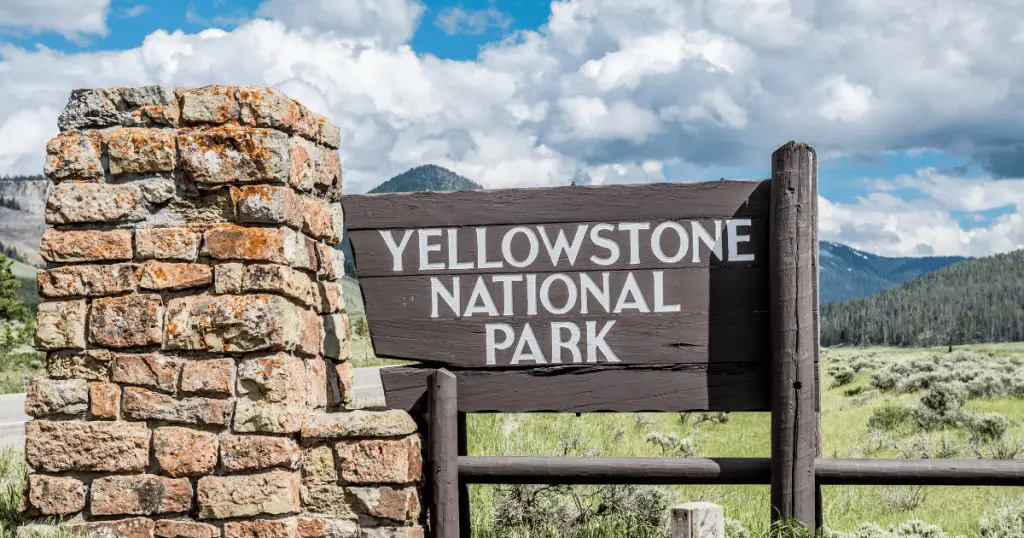
Yellowstone in March is a fantastic time to explore the park, as the crowds are thin, entry fees are low, and the landscape is blanketed in a peaceful layer of snow.
The Charm of March in Yellowstone
March in Yellowstone brings an air of tranquility and charm that is difficult to match. The park is transformed into a winter wonderland, with pristine snow-covered landscapes providing a serene backdrop to the park’s iconic geysers, such as Old Faithful. The frosty temperatures deter many visitors, making this month an ideal time for those seeking solitude amid nature’s grandeur.
The Solitude and Tranquility of March
March is a month of solitude and tranquility in Yellowstone. The park sees fewer visitors than during the busy summer months, allowing for peaceful exploration. This period of relatively low traffic allows visitors to fully immerse themselves in the park’s beauty, undisturbed by large crowds.
This tranquility is further enhanced by the muted sounds of nature during this time, with the soft rustle of the wind and the bubbling of geysers serving as the park’s peaceful soundtrack.
Wildlife Sightings in March
March is an excellent time for wildlife sightings in Yellowstone. As the park transitions from winter to spring, many animals become more visible as they venture out searching for food.
Hardy animals like bison and elk can be seen grazing in the open fields, while coyotes can often be spotted prowling the park’s diverse landscapes.
The stark, snow-covered landscape is the perfect backdrop for observing these animals in their natural habitat, making for unforgettable wildlife viewing experiences.
Must-See Attractions in March
Visiting Yellowstone in March is highly recommended, as there are many unique attractions to see. You can find the park’s famous geothermal, Grand Canyon, Lamar Valley, and Mammoth.
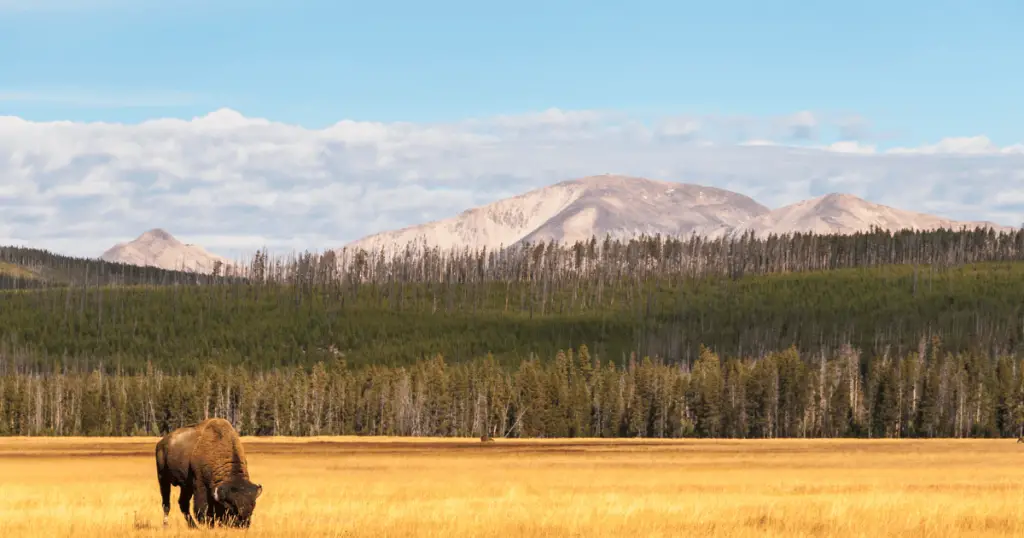
Geothermal Wonders: Geysers, Hot Springs, and Fumaroles
March presents a unique opportunity to explore Yellowstone’s geothermal wonders, with the contrast of the cold air and the hot features providing a spectacle of steam and ice.
From the famous Old Faithful Geyser to the vibrant colors of the Grand Prismatic Spring, these geothermal wonders stand out beautifully against the snow-covered landscapes.
Fumaroles, or steam vents, can be seen throughout the park, the most notable being Roaring Mountain’s many steaming vents.
Grand Canyon of the Yellowstone: Majestic Waterfalls and Scenic Viewpoints
The Grand Canyon of Yellowstone, characterized by its majestic waterfalls and scenic viewpoints, is a sight to behold in March. The Upper and Lower Falls, partially frozen, create a stunning spectacle with cascades of water tumbling down icy cliffs.
The viewpoints along the canyon, such as Artist Point and Lookout Point, offer breathtaking views of the canyon’s dramatic landscapes, enhanced by the serene beauty of a winter’s end.
Lamar Valley: Prime Wildlife Watching Area
Lamar Valley, often called America’s Serengeti, is a prime area for wildlife watching in March. This large, open valley is a popular gathering spot for herds of bison and elk, which can be seen grazing in the open fields.
Predators like wolves and coyotes can also be observed here, especially early morning or evening. The snow-covered landscapes of the Lamar Valley provide a stark contrast, making it easier to spot these animals in their natural habitat.
Mammoth Hot Springs: Terraces of Colorful Mineral Formations
The terraces of Mammoth Hot Springs present a fantastical landscape of colorful mineral formations in March. The steaming terraces, sculpted by heat, water, and minerals, create a surreal, otherworldly spectacle with hues ranging from pure white to deep orange.
The boardwalk allows visitors to explore these formations up close, providing a surreal contrast to the surrounding snow and ice.
Recreational Activities in March
Despite the cold weather, Yellowstone in March also offers a variety of recreational activities that take full advantage of the snowy landscapes. Skiing, snowshoeing, and snowmobiling are some of the best ways to explore the park in winter.
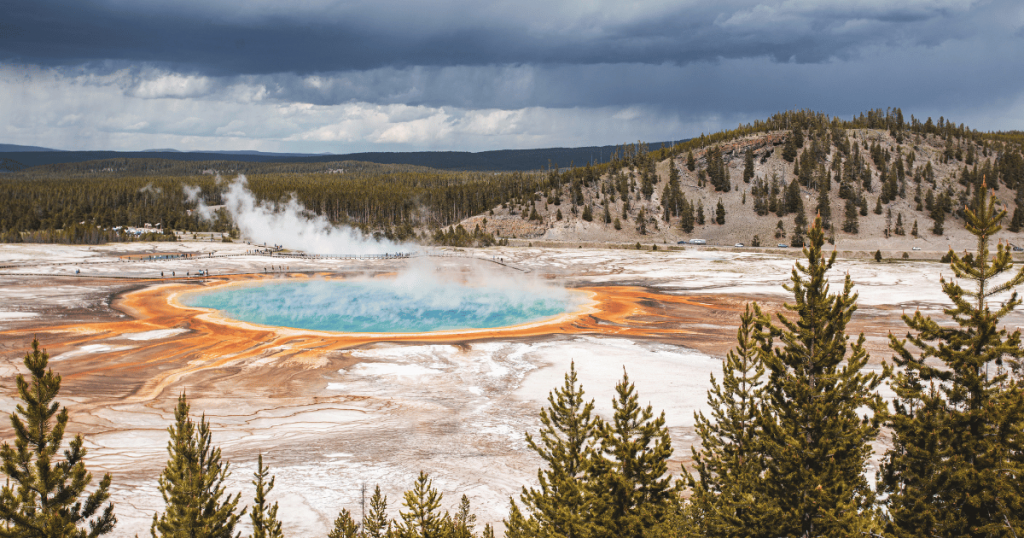
Cross-Country Skiing and Snowshoeing: Exploring the Park’s Trails
For those who enjoy winter sports, Yellowstone in March is a haven for cross-country skiing and snowshoeing. With miles of snow-covered trails leading through some of the park’s most picturesque areas, these activities provide an unparalleled way to explore the park’s beauty at your own pace.
Whether you’re a novice or an experienced skier or snowshoer, the park offers a range of trails to cater to all levels of expertise, making it an unforgettable winter adventure.
Snowmobiling: Guided Tours and Designated Snowmobile Routes
Snowmobiling is another popular activity in Yellowstone during March. Offering a thrilling way to explore the park’s vast landscapes, guided tours, and designated snowmobile routes are available for this exhilarating winter activity.
You can take a guided tour or go out on your own, but either way, it’s a unique way to see the park’s winter scenery and experience the rush of racing through the snow.
Winter Photography: Capturing the Park’s Unique Beauty
Yellowstone in March offers incredible opportunities for winter photography. The stark contrast of the white snow against the park’s geothermal features, the icy waterfalls, and the hardy wildlife make for dramatic and unique shots.
Photographers can find endless inspiration in the park’s winter landscape, whether photographing frosty fields or shimmering ice formations near geysers.
Spring in Yellowstone: A Season of Renewal
As the season transitions from winter to spring in Yellowstone, the park experiences a stunning transformation. The snow begins to recede, revealing vibrant green fields dotted with the colorful blooms of wildflowers.
Animals awaken from their winter slumbers or return from their migrations, adding to the bustle of life in the park. Spring is a time of renewal in Yellowstone, offering visitors the chance to witness the majestic effects of nature’s cycle firsthand.
The park’s geothermal features continue to captivate visitors with the warming weather. The geysers, hot springs, and fumaroles remain as active and mesmerizing as ever, their steamy eruptions providing a stark contrast against the blooming landscapes. Spring often brings more rainfall, which can create stunning spectacles as the rain interacts with these geothermal features.

Cultural and Historical Insights
Yellowstone, established in 1872, is revered as America’s first national park and holds enormous historical and cultural significance.
The park is steeped in rich indigenous history, with numerous Native American tribes like the Shoshone, Bannock, and Blackfoot having inhabited and traversed these lands for over 11,000 years. These tribes utilized the park’s abundant resources for survival and considered the area sacred.
The arrival of European explorers in the late 18th century marked a new chapter in Yellowstone’s history. The park’s unique geothermal features sparked scientific curiosity, and by the late 19th century, Yellowstone was attracting adventurers and tourists from around the world.
Conservation and Park Preservation
Yellowstone National Park is a beacon of conservation and preservation, with its diverse ecosystems providing habitat for numerous species, many of which are threatened or endangered.
The park’s commitment to conservation is evident in its efforts to preserve the native wildlife populations and their habitats. These efforts include wildlife management programs, research, and public education to foster respect and appreciation for the park’s natural environment.
Besides wildlife preservation, Yellowstone also focuses on preserving its unique geothermal features. These geological wonders face threats from tourism and external development, so the park implements stringent regulations to protect them.
Visitors must stay on designated paths and boardwalks to prevent damage to these delicate formations. Furthermore, historic preservation is an integral part of Yellowstone’s mission.
The park preserves historic structures, artifacts, and cultural landscapes to honor its rich history and cultural significance. Regular maintenance and restoration projects preserve these historical elements for future generations.
Conclusion: Yellowstone in March
Yellowstone National Park offers a unique and unforgettable experience, no matter the time of year. Its breathtaking landscapes, diverse wildlife, and historical and cultural richness make it a treasure trove for nature lovers, adventurers, and history buffs.
However, enjoying its natural beauty comes with the responsibility of honoring and preserving its delicate ecosystems. The park’s commitment to conservation and historic preservation is a powerful reminder of our collective duty to protect these national treasures.

